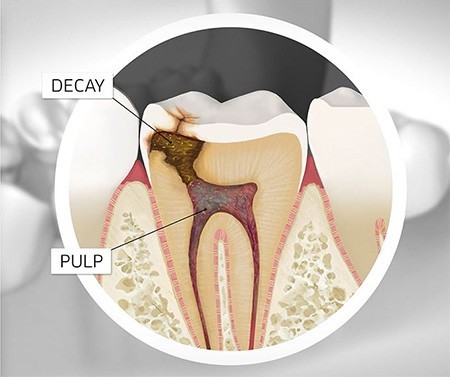Root Canal Treatment – Cost, Recovery Time, and Pain
If you’re considering root canal treatment, you may have a few questions. Read on to learn about the cost, recovery time, and pain associated with the procedure. You might also want to know what kind of dental crown you can expect. If you’re considering root canal treatment, you should consult with your dentist about financing options. Floss Dental team will be happy to answer your financial questions and make you comfortable during the procedure. He has received several positive reviews from his patients.
Pain after root canal treatment
If you’ve had a root canal treatment, you may experience some postoperative discomfort, which is completely normal. You can expect a mild level of discomfort to some degree, ranging from very little discomfort to severe pain. Generally, postoperative pain will subside after 48 hours or so. You should refrain from chewing on your treated tooth and avoid strenuous activities, such as exercise, for several days. To minimize postoperative pain, visit a dentist as soon as possible after the procedure.
Another cause of post-root-canal pain is inflamed facial muscles. The masseter muscle is one of the major chewing muscles, and any mechanical instrumentation during the procedure may irritate this muscle. Pain from irritated muscles can be difficult to differentiate from the pain from the tooth, but warm compresses and facial massages may be helpful. Pain following root canal treatment should be treated with gentle oral care.
After root canal treatment, patients should expect to experience a small amount of swelling around the tooth and gums. The area may become sore or tender and may spread to the cheek near the tooth. The swelling will typically go down within 24 hours, though most patients do not notice a significant reduction in swelling for seven to ten days. However, if you do have a sensitivity, you may need to adjust the amount of pressure that you bite.
Your dentist may recommend that you take pain relievers, such as Tylenol, or ibuprofen, to relieve the pain. These medications may help you feel better in a few days. However, if the pain persists, see your dentist. Your dentist may be able to replace the damaged tooth. Usually, this will cost you some money, and the procedure will need several visits. This procedure is not necessary if you have severe pain.
Anti-inflammatory medications can be helpful in treating soreness after root canal therapy. They help reduce inflammation that causes pain, which is another cause of pain. Several types of anti-inflammatory medications, such as ibuprofen, can be taken as needed, without a prescription. But you should not chew or bite on the area of the mouth that’s inflamed, as this will only trigger more pain.
Although root canal treatments are meant to be pain-free, you should take note of any symptoms you experience. If you notice any persistent pain more than three days after the procedure, you should contact your dentist. Most people will need one or two cleaning sessions. More frequent or severe pain may require more visits. Aside from prescription medications, you can also take over-the-counter pain relievers, such as ibuprofen or other narcotic pain relievers.
You should follow up with your dentist regularly. A temporary filling may be placed in your tooth after a root canal treatment. Check it regularly to make sure it has not fallen out. If you notice that the filling has fallen out, call your dentist as soon as possible. After a root canal, you may need a follow-up appointment to ensure your tooth is healing properly. Once your tooth has healed, you’ll be able to enjoy a restored tooth that will last for a long time.
Recovery time after root canal treatment
The recovery time after root canal treatment is typically short. However, you should expect to be a bit off your game for a few days. This is because the area around your root is undergoing tissue inflammation and pain from the procedure. If you have pain or infection before the procedure, you should consider taking over-the-counter pain relief medications to lessen your discomfort. After a couple of days, you should be feeling just fine.
Pain during the procedure usually goes away over the next few days, but you may experience some mild discomfort following the cleaning. The dentist will make a small hole in the crown of your tooth and remove diseased pulp from the pulp chamber inside. It is normal for this process to cause some soreness. If the pain persists, you should visit your dentist. Recovery time may be prolonged if you develop an infection before or after the procedure.
It is important to follow a healthy diet. After root canal treatment, you should avoid hard and sugary foods. You should also brush your teeth twice a day using gentle circling movements and avoid chewing hard or crunchy foods and eat less sugary food. You can also try using an ice pack to reduce the inflammation in the area. After the procedure, you should keep your head raised while sleeping, as blood traveling to the wound site can trigger further inflammation.
You can return to work the next day after root canal treatment if you have had sedation. However, some people need more time to recover, so it is important to consult your dentist for more detailed instructions. However, most people are able to return to work the day after root canal treatment. Soreness is normal, but you should avoid chewing on the tooth until you are completely healed. If you choose to have a permanent crown, you can continue your daily routine as soon as you feel comfortable with the procedure.
Although root canal treatment is a routine dental procedure, it can lead to a rash. In addition, you should visit a dentist if you experience swelling and rashes. Generally, root canals are not painful and are necessary for a healthy mouth. Just be sure to follow these tips for recovery. They will make your recovery a little easier. So, don’t delay your next appointment.
Recovery time after root canal treatment is generally one to two days. You can expect some mild soreness for the first 24 hours after the procedure. Use over-the-counter pain medications to help with the pain, and make sure to keep your usual oral hygiene routine. Moreover, make sure you don’t chew on the treated tooth as this will increase the risk of continuing the infection. If the bacteria continue to grow, it will spread to surrounding teeth and create cracks in the dental root structure.
Cost of Root Canal Treatment
There are many ways to pay for root canal treatment. Dental insurance may cover the procedure or part of it, depending on your policy. Regardless of insurance coverage, you should shop around and compare quotes. In some cases, your insurance may even cover the entire cost. Make sure to check your policy for details, and be prepared to pay a deductible. In addition to deductibles, some insurance policies cover only a portion of the treatment, which can be a significant difference in the overall cost of the root canal treatment.
The cost of root canal treatment will vary depending on the severity of the infection and how early you seek treatment. Early treatment will help limit the spread of the infection, making a cavity filling easier. Delaying treatment will only make the infection worse and result in a larger bill. A filling may be cheaper than a crown, but it can be more expensive. To determine the cost, talk to the dentist and ask about their payment plans.
If you don’t have dental insurance, you can still use your HSA to cover the costs. You can deposit up to $3,350 per year (per person, per family) in your HSA. You can also find a list of long-term dental care plans through the dental association. In most cases, the cost of root canal treatment is between $500 and $1300. However, it is important to note that the costs of root canal treatment will be different for different insurance plans, so you should check with your insurance carrier for a detailed breakdown.
The cost of root canal treatment varies significantly from state to state. The process usually takes one visit, and the dentist removes the diseased tissue from the inner chamber of the tooth. The inner chamber is then cleaned, disinfected, and reshaped. Once this has been completed, the tooth is sealed and capped with an elastic material and medication to avoid re-infection. The procedure is also sometimes followed by a temporary filling or a temporary crown. Whether or not you get a permanent crown depends on the dentist’s office policy and cost.
When comparing cost and quality, remember that the more expensive option may be better for you. Some dental plans will cover the entire cost of root canal treatment, but not the crown. The costs for additional procedures will increase the overall cost. The cost of root canal treatment varies greatly from one state to another, and they also vary within a state. The lower cost states have lower root canal prices than those in the west, and different regions in the same state can differ greatly in price.
While the cost of root canal treatment is based on how much the treatment costs, you should factor in lost wages and missed days of work. Despite the temporary discomfort, you should still visit the dentist if you are experiencing any prolonged discomfort. The root canal treatment procedure is expensive, but the long-term benefits can be far outweighed. The process will save your natural tooth, and you can return to work or school afterward. You should avoid eating until the numbness has passed.

